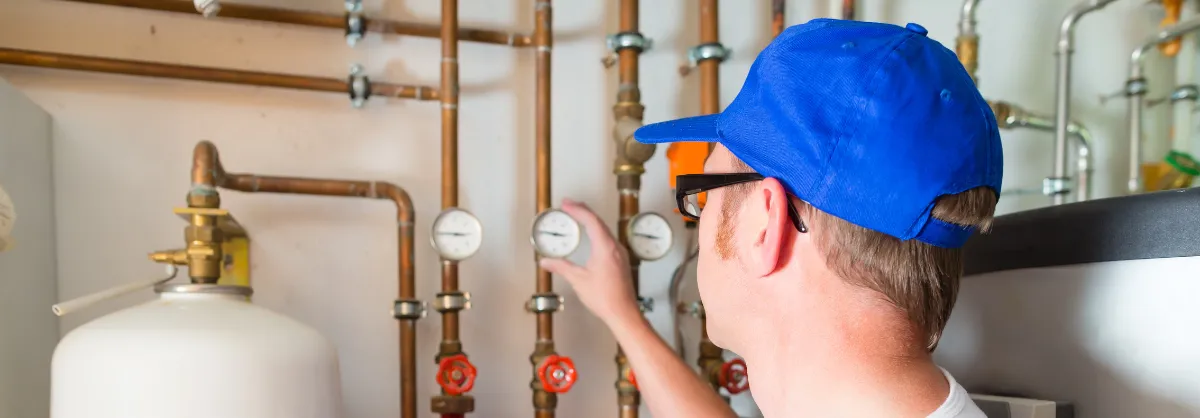Water Quality Resources is our go-to blog for all things related to water health and safety. Here, we delve into the essential topics of water quality, providing you with the latest research, expert advice, and practical tips to ensure your water is clean and safe. Whether you're a homeowner, a scientist, or just someone interested in environmental health, our blog offers valuable insights and resources to help you understand and improve the water you use every day. Join us on a journey towards better water quality and a healthier future.
Browse Our Categories!
Featured Videos:
Recent Articles:

The Importance of Regular Maintenance for Water Softeners
Water softeners are vital appliances that ensure the water in your home is free from excessive minerals, providing numerous benefits such as preventing scale buildup in plumbing, extending the life of household appliances, and enhancing the efficiency of soaps and detergents. However, to enjoy these benefits consistently, it is crucial to perform regular maintenance on your water softener. Regular maintenance not only ensures optimal performance but also extends the lifespan of the device. Here, we’ll explore why regular maintenance is essential and provide a guide on what to do every six months and annually.
Why Regular Maintenance is Crucial
1. Consistent Water Quality
Over time, the resin beads in a water softener can become coated with iron, sediment, and other impurities, reducing their effectiveness. Regular maintenance keeps the system clean and ensures a steady supply of softened water.
2. Extended Lifespan
Like any appliance, water softeners experience wear and tear. Regular upkeep can prevent minor issues from escalating into major problems, thereby prolonging the life of your unit.
3. Efficiency
A well-maintained water softener operates more efficiently, using salt and water more effectively during the regeneration process, which can save you money in the long run.
4. Preventing Repairs
Routine checks can identify potential problems early, preventing costly repairs and inconvenient breakdowns.
Six-Month Maintenance
Every six months, it is recommended to perform the following maintenance tasks:
1. Check Salt Levels
The salt in the brine tank should be checked and refilled as necessary. Ensure that the salt level is always above the water level. If there is a hard crust of salt (known as a salt bridge), it needs to be broken up.
2. Clean the Brine Tank
Occasionally, the brine tank may accumulate sludge or mushy salt. If this occurs, empty the tank and clean it thoroughly before refilling with fresh salt.
3. Inspect for Salt Bridges and Salt Mushing
Salt bridges can prevent the water softener from regenerating properly. Use a broom handle or similar tool to break up any salt bridges you find.
4. Add Resin Cleaner
Depending on your water's iron content, adding a resin cleaner to the brine tank during the regeneration cycle can help maintain the effectiveness of the resin beads.
Annual Maintenance
Annually, a more thorough inspection and maintenance routine is recommended:
1. Clean the Resin Tank
Over time, the resin beads can become fouled with iron and other minerals. Use a resin cleaner to clean the beads and ensure they remain effective at softening your water.
2. Check the Control Valve
The control valve is the brain of the water softener. Ensure it is functioning properly and inspect it for any signs of wear or damage. This may include checking for leaks and ensuring all settings are correct.
3. Inspect the Brine Tank Float
The float in the brine tank regulates the water level. Make sure it moves freely and is not obstructed or damaged.
4. Professional Inspection
While many maintenance tasks can be done by the homeowner, it's wise to have a professional inspect your system annually. They can perform a thorough check-up and address any issues you may not have noticed.
Let Superior Water Softeners Help You!
Regular maintenance of your water softener is essential for ensuring consistent water quality, extending the lifespan of the device, and preventing costly repairs. By following a simple maintenance routine every six months and a more comprehensive one annually, you can keep your water softener in top condition, ensuring it provides the best performance and value for years to come. Remember, a little time and effort spent on maintenance can save you significant time, money, and hassle in the long run.
Subscribe:
The Inside Source
Stay up to date with what's happening in the water industry. Get exclusive first-reads and stay informed! Subscribe now!



